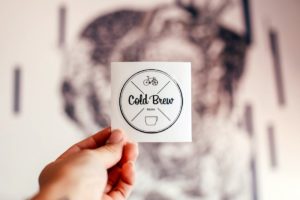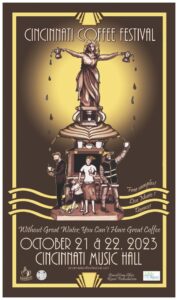Let’s call a spade a spade. Americans have no patience for long wait times. We’ve got to make the world move as fast as we need it to!
Thank God for ATM machines, microwaves, fast foods, and instant coffee!
With very little time to spare, instant coffee is a very good option.
No brewing, no grinding. Just a cup of hot water and a spoonful of instant coffee!
But how much do you know about it?
Let me share with you 10 facts about the history of instant coffee.
But first things first.
By Lilian.
Affiliate disclosure
This page may contain affiliate links – we may earn a small commission when you make a purchase through these links. This is at no extra cost to you.
What is Instant Coffee?
Adda Bjarnadottir, a registered nutritionist, shares that instant coffee is basically coffee made from dried coffee extracts.
All you need to do is add water to the coffee extracts and your cup of coffee is ready! (I’ll tell you how they make the extracts later on).
8 Facts on The History of Instant Coffee
Instant Coffee Originated in Britain
The first instant coffee was manufactured in Britain by John Dring back in 1771. That’s 250 years ago!
At the time, it was simply a “coffee compound” that had been patented by the British government.
America Made Their First Instant Coffee in 1851
You’d think that Americans were swift to adopt instant coffee after its invention in Britain.
Nope.
Instant coffee came to America during the American civil war, 80 years after it was invented in Britain!
Mass Production of Instant Coffee Started in America
Back in 1909, George Washington – an American inventor and businessman who had immigrated from Belgium – received a patent for his instant coffee.
It was called the “Red E Coffee” and was the first commercially produced instant coffee in the world!
George made the invention during a visit to Guatemala using coffee powder settled/deposited on the spout of a silver pot.
Nescafe Instant Coffee was the Second Instant Coffee Brand in the US
Nescafe started mass production of instant coffee on 1st April, 1938, beating Red E Coffee at the game.
Red E had been a near-monopoly for 30 years!
The Earliest Commercial Instant Coffees Were NOT Pure Coffee Beans
Commercial instant coffee producers like Nescafe co-dried coffee extracts combined with soluble carbohydrates to improve the taste and make a stable powder.
It was only in 1954 when Nescafe produced the first instant coffee prepared from 100% real coffee beans with no added substitutes, carbohydrates or chemicals!
Instant Coffee Was a Staple in World War II
Away from the comfort of the grinder and brewer in their homes, American soldiers had to make-do with what was available on the battlefield.
They also needed the caffeine boost!
According to the University of Southern California, during World War 2, instant coffee was very popular among soldiers.
In fact, for a whole year, the US Nescafe plant only produced instant coffee for the soldiers in the battlefield!
The most interesting thing is that once back home, the soldiers still craved for their “cup of George” (what they called instant coffees back then)!
By the 1950s, 1 in 10 of all Cups of Coffee in America Were Instant
At this time, Nescafe (and other manufacturers) had refined the taste of their instant coffees so it was starting to gain popularity.
By 1970, the proportion of instant coffee compared to regular coffee was about 1 in 4 cups (26%).
In the early 80s, 1 in 4 Americans had a cup of instant coffee every day.
Consumption of Instant Coffee Took a Nosedive in 1983
True coffee aficionados must have started dismissing instant coffee around this time, a notion that’s held by many of them, to date.
Since then, coffee consumption patterns have shown no significant improvements.
According to Olam’s Specialty Coffee, the percentages were set as 22, 12, 10 and 6% in 1983, 1993, 1999 and 2004 respectively.
Improvements were only noted during the pandemic – 11% in 2021.
Now that we’ve learnt about the history of instant coffee, I’d promised to let you know about how they make your favorite instant coffee extracts earlier on.
Right?
Before you bash me, let’s do it!

How to Make Instant Coffee Powder?
The process of coming up with coffee extracts starts with roasting and grinding actual green coffee beans, just like any other coffee.
The only difference is that the beans are first hit with piping boiling, extremely pressurized water. The objective is to brew the coffee grinds and extract the oils and other compounds into the water.
This step is then followed by evaporating to maximize the content of coffee in the liquid.
The brew is then freeze-dried and broken into small pieces to make instant coffee crystals/powder.
To make a cup of instant coffee, all you need to do is re-hydrate them – mostly using water, or milk.
There’s no doubt that Nescafe remains one of the most popular instant coffee brands in America.
But how healthy is it in terms of caffeine levels?
Read on!
How Much Caffeine in Nescafe Instant Coffee?
For a quick answer, caffeine levels depend on the specific types.
For instance, Nescafe Blend has lower caffeine levels than Nescafe Gold.
However, in basic terms, each time you consume a teaspoon of Nescafe’s instant coffee, that’s about 2 g serving of Nescafe’s instant coffee.
You’re basically gulping up 50 (Nescafe Blend) to 90 (Nescafe Gold) mg of caffeine.
So, if you have 2 cups of instant coffee, each with a teaspoonful of instant coffee powder, you’ll be consuming about 100 to 180 mg of caffeine.
Let me remind you that experts at Mayo Clinic recommend a maximum daily intake of 400 mg of caffeine.
So, if you’re a heavy instant coffee drinker, with Nescafe Blend, you can enjoy up to 8 cups of coffee every day, but for Nescafe Gold, better stick to 4 cups.
Either way, I still think that’s too much!
Photos by priyampatel4 and mammela





